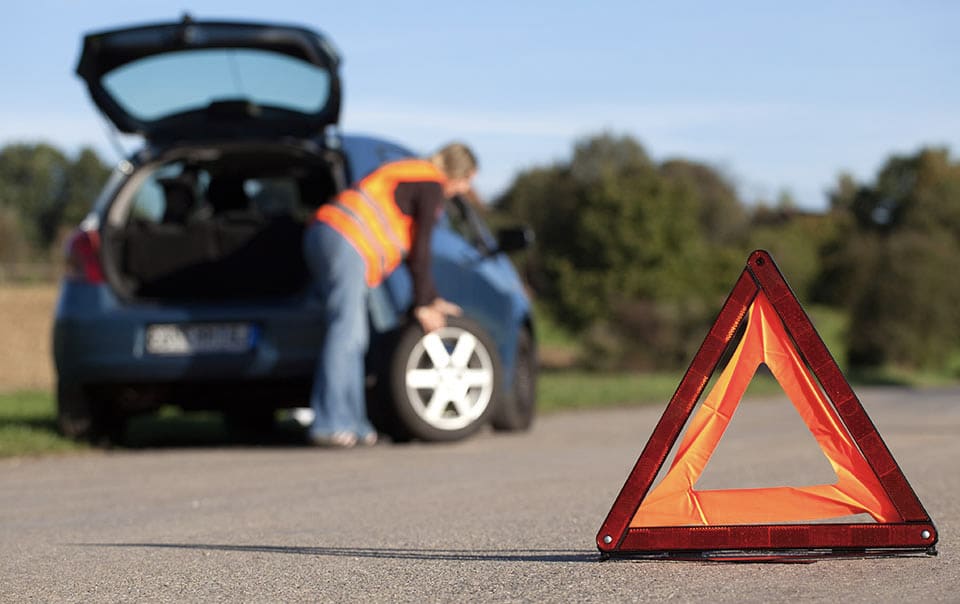There’s nothing more scary or potentially dangerous for many drivers than a tire blowout at nearly any speed. While the number of tire-related crashes has dropped dramatically since 2008, when automatic tire pressure monitoring systems were required for all new vehicles, these numbers remain high. The stats do not lie, as tire blowouts and flats result in nearly 11,000 collisions and 200 fatalities each year.1
Why are tire blowouts still such an important safety issue with all the advances in safety standards and technology? One reason might be that since blowouts are now a rarer occurrence, drivers are less willing to handle and react properly when they do occur. When a tire blows out, it can take about ¼ second before your ride suddenly becomes a struggle to avoid an auto accident. How you react can make all the difference in how the situation resolves itself. The first step is staying calm and in control of your vehicle.
What Does a Tire Blowout Sound Like?
Expect three key sounds that may vary depending on your particular situation. First, you may hear a loud boom or tire bang popping through your car reverberating. You may then hear a whooshing sound or the sound of the air quickly escaping from the tire, and finally, a repeated flapping or flopping of the deflated tire hitting the road.
What Does a Tire Blowout Feel Like?
When a tire explodes at speed, you will feel the vehicle slow down first, then it pulls sharply to the left or right depending on which tire burst.2 If it was a front tire that burst, you will feel the force mostly inside your vehicle’s steering. You’ll feel it more in the car’s seat or body with a rear tire. Whether the blowout occurred in the front or back, your response should be the same in either situation.
How to Drive Through a Tire Blowout
According to the National Safety Council and other safety experts, there are some important tips and best practices to remember if you experience a tire blowout.
- Keep a firm grip on the steering wheel.
- Do not slam on the brakes.
- Let your car slow down gradually.
- Pull to the side of the road once you have slowed to a safe speed.
- Activate your emergency flashers.3
What to Do After a Tire Blowout
Only exit your vehicle after a blowout if you are sure you are safe off the road and out of the way of harm. Turn on your emergency flashers to alert other drivers and, if you have them, put out reflective cones or triangles. If it is not safe to change the tire where you are, or you are unsure how, call for roadside assistance.
Also bear in mind that a spare is recommended only for emergencies and should not be driven at high speeds or long distances. Take the time to read the manual of your owner to learn where your spare tire and the tools you need are. Your manual may also provide instructions on how to change a flat tire. It is a good idea to be familiar with these procedures before you get stuck on the side of the road.
How to Prevent a Tire Blowout
The good news is that with the proper effort and attention, many tire blowouts can be avoided. Most occur between May and October when the road surface is the hottest resulting from an underinflated tire, excessively worn treads, or a vehicle overloaded. A simple, routine inspection of your tires to check for slow leaks, wear and tear, and proper pressure is important. Keeping your load light.
1 http://www.safercar.gov/tires/index.html
2 http://www.ntb.com/tires/Tire-Blowout-Education.j
3 http://www.nsc.org/news_resources/Resources/Pages/WhattoDoIfYouHaveaBlowoutontheHighway.aspx
4 http://www.popularmechanics.com/cars/how-to/repair/why-blowouts-happen-and-how-to-avoid-them-15832078


![Read more about the article Build an emergency car kit [infographic]](https://www.pinsurancellc.com/wp-content/uploads/2016/12/Emergency-Winter-Car-Emergency-Kit-300x300.jpg)
